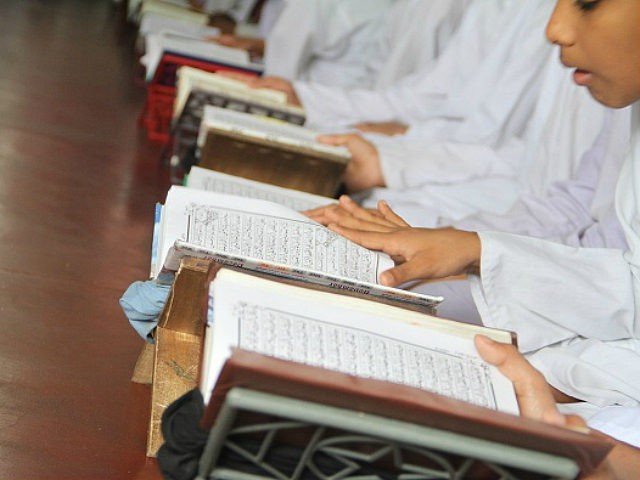Sunni Saudi Arabia is reportedly investing nearly $600 million on erecting two higher education institutions in restive areas of Afghanistan.
The Islamic University in Afghanistan and an Islamic Center, complete with a university and a mosque, will be built in an apparent effort to up the ante after the kingdom’s rival Shiite Iran constructed one of the largest Islamic universities in the Afghan capital of Kabul.
To recruit and radicalize Muslims in Afghanistan, as well as spread their respective extremist Islamic ideologies Shiite “Khomeinism” and Sunni Wahhabism, Iran and Saudi Arabia are using madrasas, which refers to educational institutions that are often part of a mosque and offer instruction in Islamic subjects.
While “Khomeinism” is embraced by Shiite jihadist groups such as Iran’s narco-terrorist proxy Hezbollah, Wahhabism has been adopted by most major Sunni terrorist groups, most prominently the Islamic State (ISIS/ISIL) and al-Qaeda.
The Diplomat reports:
Tehran has built one of the largest madrassas in Kabul, the [$17 million] Khatam-al Nabyeen Islamic University, which is reported to be “closely linked with Iran” and “serves as a focal point of Iranian influence activities, including the promotion of velayat-e faghih [Guardianship of the Islamic Jurists].”
In response, some years back, the Sunni kingdom began to build a $100 million Islamic Education Center in Kabul, which has been targeted by both the Islamic State (ISIS/ISIL) branch in the region and its rival the Taliban.
Khaama Press (KP) now reports that, in addition to the the Kabul madrasa, the Saudis will construct a $500 million Islamic University of Afghanistan in Nangarhar province, which lies along the Pakistan border and is considered the region’s ISIS stronghold.
U.S.-backed Afghan security forces have been engaged in a counterterrorism offensive against the group since July.
“Both Riyadh and Tehran exercise soft power to expand influence in the [Afghanistan-Pakistan] region. That includes sponsorship of madrasas, mosques, and media centers,” notes The Diplomat.
Nevertheless, KP adds:
The ambassador to Kingdom of Saudi Arabia in Kabul Abdul Rahman Al-Ghasib said Saudi has always fought against the terrorism and only those who are against the terrorism and extremism, would be admitted in this university [in Kabul] to learn about Islam and introduce a moderate Islam to the world.
Majority of the Afghan students are currently traveling to Pakistan for Islamic studies, which is a major concern for the Afghan government as religious schools (Madrasas) are playing a major role for the enrollment of militants to fight in Afghanistan.
A madrasa in northeastern Pakistan linked to the Sunni Deobandi sect reportedly gave birth to the Afghan Taliban. The Deobandi ideology is believed to be closely affiliated with Wahhabism because it also advocates an equally strict, puritanical interpretation of Islam.
It appears the state-sponsor of terrorism Iran and Saudi Arabia are competing for influence over the Sunni majority and Shiite minority in Afghanistan and Pakistan, a competition that may already be fueling sectarian strife in those two countries, where Shiites and Sunnis have lived in relative peace.
Some members of Afghanistan’s Shiite Hazara minority, who have been targeted by both the Taliban and its rival ISIS, have been paid and sometimes coerced by Iran to fight and die on behalf of Syrian Dictator Bashar al-Assad.
Those who make it back to Afghanistan battle-hardened could exacerbate sectarian conflict in Afghanistan.
With Iran taking advantage of Shiite Afghan refugees within its borders by deploying them into Syria and allegedly renewing its relations with the Afghan Taliban terrorist group, which has killed Afghan troops and civilians in record numbers, Saudi Arabia may have a better chance at expanding its influence in the country.
The kingdom’s Wahhabi ideology emphasizes a radical extremist practice of Sunni Islam, the literal interpretation of Islam, and is embraced by most major Sunni jihadi groups.
However, Saudi Arabia has noted that “Khomeinism” is primarily focused on “anti-Western hatred… [and] sectarianism that has energized and empowered extremism.” Sectarianism has been behind the bloodshed and chaos that has plagued Pakistan, Iraq, and Syria in recent years.
“Khomeinism” has expanded to various areas across the world including the United State and Latin America, bringing terrorism along with it, particularly the Lebanese-based Shiite group Hezbollah, which is also operating in the United States.
The Islamic Republic also uses its elite force known as Iran’s Revolutionary Guard Corps (IRGC) to fund, train, provide weapons, and facilitate acts of terrorism. Along with Hezbollah, the IRGC has used so-called Iranian cultural centers located across the Western Hemisphere and the rest of the world to recruit Shiites and recent converts and promote “Khomeinism.”

COMMENTS
Please let us know if you're having issues with commenting.